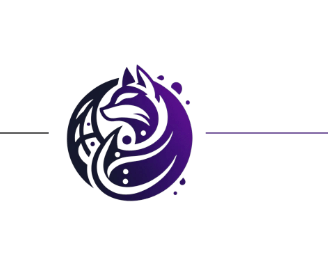AI’s Double Edge: Efficiency or Exclusion?
AI’s potential to discriminate against non-native English speakers and those with unique writing styles. Explore the ethical implications of AI-powered evaluation tools and their impact on multiculturalism.
MULTICULTURALISMAITECHNOLOGYSECOND LANGUAGE ACQUISITIONPROFESSIONAL DISCRIMINATION
Aria Caffaratti, MBA, PMP
7/23/20243 min read


Back in my day, school and university grades could be debated. I remember several occasions when I was not pleased with my marks — and went to discuss them further. My mark would often remain the same, but I would get valuable knowledge and better understand my mistakes. However, sometimes I was able to explain my calculations or reasoning — and could improve my grade as a result.
As I went through the educational system's pipeline, I noticed how much more standardized and firm the marking system had become. By the time I graduated with my MBA, the evaluation system had gone from “let’s talk about this and learn from our experiences” to “this is the standard answer sheet and if your response doesn’t fit the bill, you’re out”.
Some universities use AI tools to speed up the evaluation process
I think it’s brilliant: cost-efficient and saving time. Many high-level educators will have more time to pursue research and create better-quality programs for their students. However, working in a multinational setting, I am also conscious of AI-related risks.
I am particularly interested in and worried about biases. Let me ask you: would you agree for your exam or an academic paper to be evaluated by software?
Technology is still in its early stages. Can we trust the software to do the job perfectly? Apparently, not. Usually, a human will still follow up and check the marks. However, there’s no telling how in-depth such a review is.
Experience and scientific research show that we tend to get lazy when more tools become available. Some disciplines offer a seamless “correct” or “incorrect” evaluation. But I strongly believe that others require thorough reviews.
Can we trust AI detectors?
AI-detection tools are looking for particular phrases and words. These systems are powered by historical data — online information, academic papers, Google, etc. The more mainstream our content may seem, the more chances it was AI-generated.
However, this poses an important question: what about professional communities and people coming from a particular sociocultural background? For example, as someone who went through a classical education system, I often find myself using certain words and phrases. They were seen as “good examples” back in the day — yet now the software marks them as “bad practice” or potentially AI-generated content.
I read several articles on Medium, where writers compiled a list of words or expressions — and openly stated that these show if someone is using AI to create content. There’s an abundance of online websites sharing such phrase lists:
“In today’s digital age”
“Delve into”
“Aims to bridge”
“In conclusion”
“Final thoughts”
“Breakthrough has the potential to revolutionize the way”
“Cutting-edge”
“Exciting opportunities”
“Essential to understanding the nuances”
“Expanded its capabilities”
“Groundbreaking study”
“In the fast-paced world”
“Notably”
“Push the boundaries”
“Possibilities are endless”
“Revolutionizing the way”
“Unleashing the potential”
Mind you, these are the standard phrases from business books, annual reports, and research papers. That’s exactly what I read throughout my years in the academic setting. Think twice if I wrote any different — most of our research papers had to adhere to particular style guidelines, and no “personal style” was allowed.
Years later, I still propagate the academic writing style in my work environment. The corporate guidelines aren't that far away either — the administrative writing style is rather cold, standardized, and frigid. It’s just the way it works. Quite frankly, I struggle to understand how using professional language can land us in the eye of the AI detector. Yet, here we are.
The multinational dilemma
As jobs are becoming more flexible, many professionals are traveling and working remotely. Many of us boast of a multicultural background — several languages, nationalities, and odd residency statuses. One would think that as our working environment is becoming more diverse, there’s more equality and inclusion. However, research shows that AI tools are more likely to discriminate second language speakers.
A study from Cornell University discovered that GPT detectors were more likely to identify non-native English writing as AI-generated in comparison to samples from native English writers. It’s interesting to note that the same study revealed how simple prompting strategies enable mitigating these biases and allow bypassing GPT detection systems.
It offers the conclusion that AI tools may unintentionally penalize certain writers — those from a multilingual background as well as writers with unconstrained linguistic expressions.
This urges us to evaluate how we use AI detection systems in educational and other evaluative settings.
Technology enables great progress: we’re able to process our work in a more efficient way, and it saves us energy, time, and money. However, as we deploy more tools, we need to remain vigilant and approach them with caution. There are risks to be managed and practices to be followed.
After all, we must remember — it is not technology that is biased, but humans behind it.



